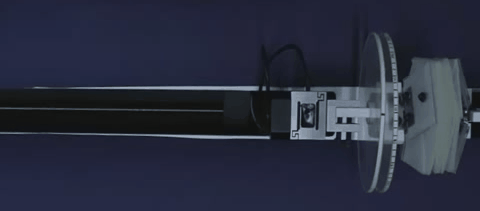Research
Team
Publications
News
|
Origami-based Helical Structures with Switchable and Hierarchical Chirality
From: Date: 2020-05-15 Inspired by origami, Prof. Yan Chen’s group in Tianjin University designed helical structures with tunable chirality, and achieved chirality switching through mechanism bifurcation and hierarchical chirality by introducing a helical tessellation between the chiral units. The results were published in Applied Physics Letters with the title " Helical structures with switchable and hierarchical chirality " in May, 2020 ( https://doi.org/10.1063/5.0005336).
Fig. 1 Origami-based chiral units and structures In general, the chirality of a designed structure is fixed. It requires reconfiguration to achieve chirality switching in man-made chiral structures owing to the different construction of structures with different chirality. Therefore, the authors replaced the paper chiral structure with the linkage based on the kinematic equivalence between rigid origami and linkages. The chirality switching was achieved by taking advantage of mechanism bifurcation.
Fig. 2 Chirality switching
Fig. 3 Helical structures with hierarchical chirality This design and analysis approach could facilitate the development of man-made metamaterials with new chiral features, which may serve in engineering applications, including switchable electromagnetic metamaterials, morphing structures, and bionic robots. It can be also used as theoretical models to understand the mechanism of chirality in nature.
|



